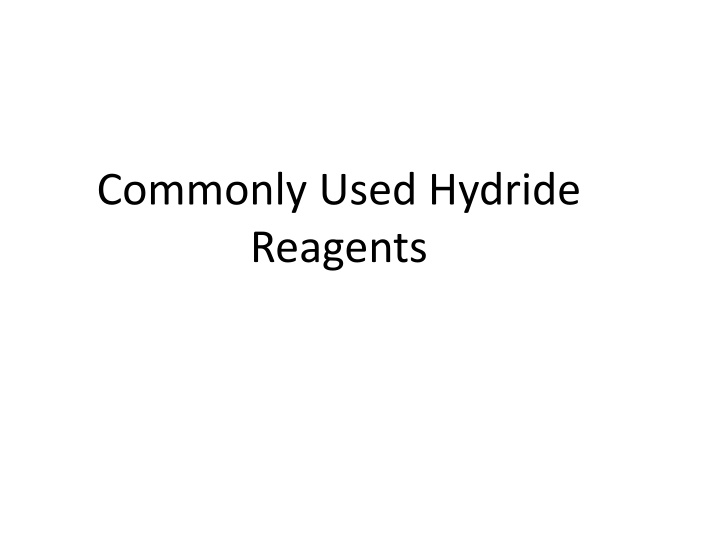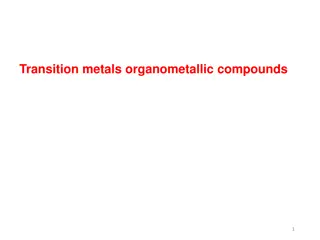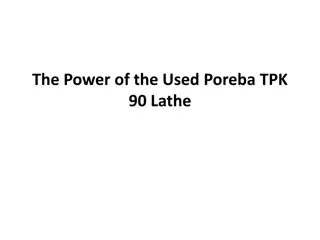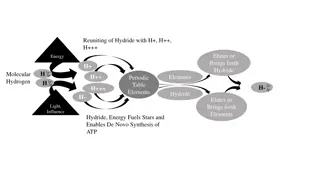Commonly Used Hydride Reagents
Hydride reagents are essential in organic chemistry, acting as bases or nucleophiles toward carbonyl groups. Common hydrides like NaH and LiAlH4 have varying reactivities, with NaH used as a strong base and LiAlH4 as a nucleophile. Handling reactive hydrides requires caution due to potential hazards. Learn about reactions of NaH, its role as a base, and applications like Williamson Ether Synthesis.
Download Presentation

Please find below an Image/Link to download the presentation.
The content on the website is provided AS IS for your information and personal use only. It may not be sold, licensed, or shared on other websites without obtaining consent from the author.If you encounter any issues during the download, it is possible that the publisher has removed the file from their server.
You are allowed to download the files provided on this website for personal or commercial use, subject to the condition that they are used lawfully. All files are the property of their respective owners.
The content on the website is provided AS IS for your information and personal use only. It may not be sold, licensed, or shared on other websites without obtaining consent from the author.
E N D
Presentation Transcript
Commonly Used Hydride Reagents
Hydride acting as a base. Hydride acting as a nucleophile toward the carbonyl group. Several forms of hydride (H-) find use in organic chemistry, including NaH, CaH2, LiAlH4, NaBH4, and NaBH3CN (and several others). The reactivity of hydride varies considerably, depending on the nature of the element to which it is attached. It can function as either a base (e.g. NaH) or as a nucleophile (particularly toward addition to the carbonyl (C=O) group) when formulated as LiAlH4 and NaBH4.
H2 has a pKa value of 42, thus the conjugate base (hydride) is extremely strong, easily deprotonating alcohols, for example. Sodium Hydride, NaH, is used exclusively as a strong base. Calcium Hydride, CaH2, is used nearly exclusively as a drying agent, reacting with moisture in solvents to generate hydrogen gas and calcium hydroxide. The solvent is then distilled to separate the dry solvent from the solid calcium hydroxide. One needs to handle more reactive forms of hydride (e.g. NaH and LiAlH4) extremely carefully, since reaction with water or alcohols will generate hydrogen gas with enough exothermicity to start a fire (or cause an explosion).
Reactions of NaH Sodium hydride is relatively insoluble, and is usually used in DMF or THF solvent.
NaH is used almost exclusively as a base (not as a nucleophile) to generate oxygen, nitrogen, and carbon anions. EWG = Electron Withdrawing Group, C=O, CN, etc.
Reactions of Lithium Aluminum Hydride LiAlH4 is more soluble and can be used in the solvents diethyl ether or THF.
Reactions of Sodium Borohydride Sodium borohydride (NaBH4) is both less reactive and less soluble than LiAlH4. Thus, it is frequently used in alcoholic solvents, although it has a limited lifetime in such solvents (due to its reaction as a base with the ROH.)
NaBH4 is less reactive than LiAlH4 and does not reduce esters or amides
Notice that NaBH4 can selectively reduce ketone in presence of ester and epoxide.
Notice that NaBH4 can reduce ketone in presence of ester (and aziridine)























